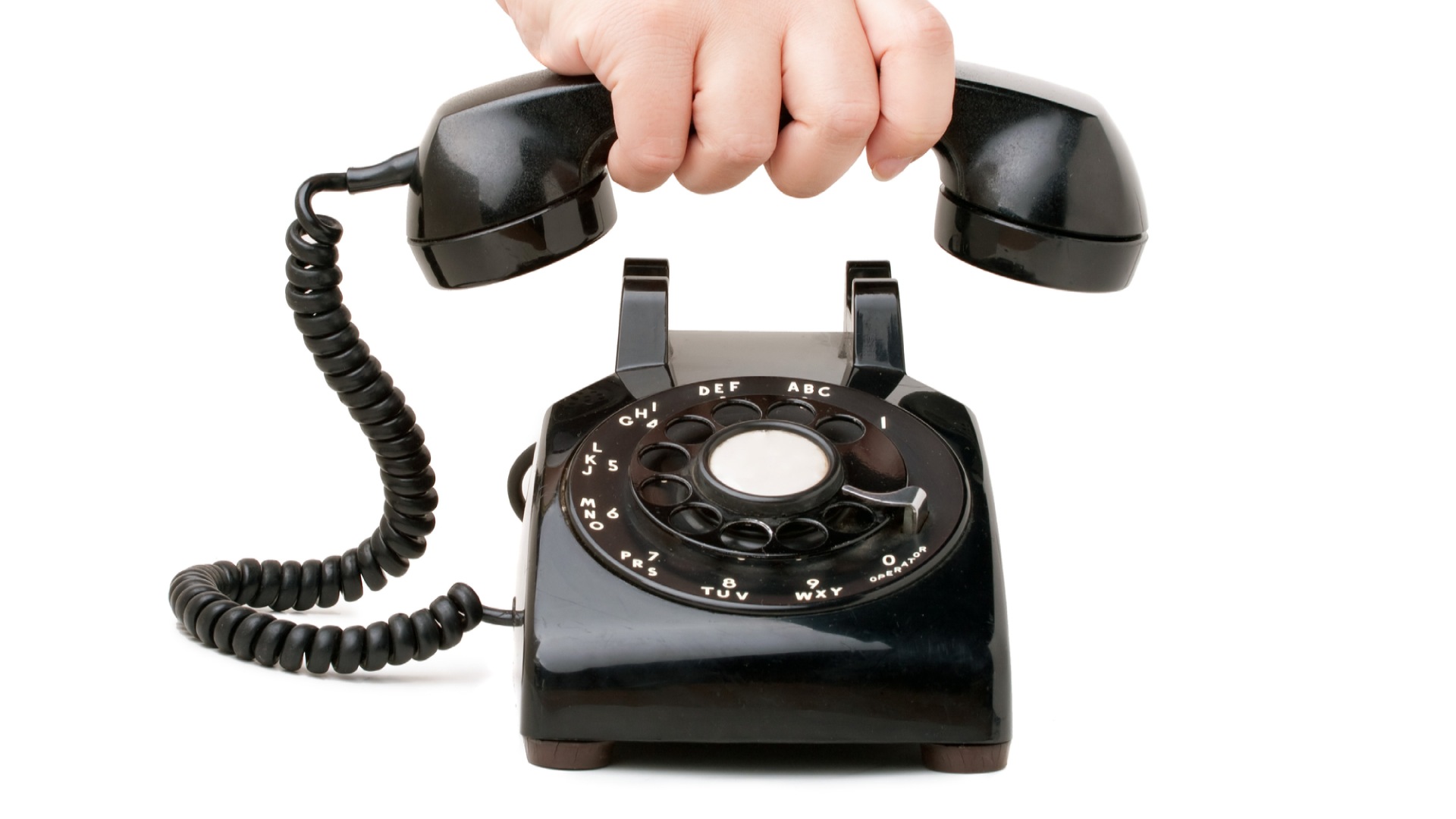In 2012, the industry average was 4.7 calls to reach a cold prospect. Now it takes 9. Why? I sat down with our sales development team members who have been in cold calling business for more than 30 years. This is what Carter and David had to say about cold calling and why it is NOT dead.
Offer value, not your product or service
Cold calling is a waste of your time if you don’t offer value, and if it’s out of context. The aim of the cold call should never be to sell your product or service, but to offer value and insight.
Have a plan in place before you start calling
In order for cold calling to work, you have to have a plan. Start with creating a target list. Research the companies and prospects you are reaching out to. Make sure you really know who your target persona is and you understand their challenges and pains, and how your product or service can help alleviate that. Second, develop a call plan. Consider developing a call, email, and/or social media outreach cadence to determine when, how often, and what will happen on each touch. If the cadences end without contact, set follow up activity and start the cadence again. Follow up and discipline is the key to success here.
Once you start calling, don’t open your statement with a sales pitch. Instead, be helpful, and listen to the prospect to determine how to pivot in the conversation. If it’s not the right time, respect that and ask when would be the right time and set follow up activity. You’re more likely to get the meeting by following up when the time is right and more likely to lose the opportunity to speak with that prospect ever again if you push them for a meeting that they’re not ready for.
Separate your teams
A lot of companies nowadays have an SDR team and a sales team. And they often do a combination of cold, warm and inbound leads. Consider having a designated number of SDRs doing inbound only or cold calling only because you can't manage them on the same metrics. And the only way you can do that though is if you have volume. If you have the volume, then you can dedicate a member to a specific campaign and separate the metrics.
Consider integrated approach
Cold calling has evolved over the years with the rise of technology and the way people communicate. Cold calling has turned into a combination of cold calls, cold emails, and cold social media outreach to connect and build relationships with your target prospects.
One of the important things about cold calling versus social emails is the fact that you can learn about your prospect faster. Where are they right now? Are they even thinking about this? You can learn those things on the phone, and you can also optimize the sales process more efficiently through cold calling. Let's say you have 10 conversations in one day and all of them are negative. You can go back and listen to what you said and pinpoint where you lost them, where it went wrong. That allows you to tweak your message. From our experience, that process is quicker through cold calling than through email because it's unlikely that your prospect will ever respond to your email with an exact reason why and when you lost them.
Nonetheless, prospects are getting more responsive via email than they are on the phone. You have to use multiple platforms nowadays to reach them - calling is always going to be immediate regardless of what you're doing, but the emailing and the social media side are all about building a long term relationship.
Be persistent
If you're cold calling, and you're not making a hundred calls a day or more, you're most likely not getting the connectivity that you need. Our data has consistently shown a 4% connectivity on a good week. Out of a hundred calls, that's four conversations a day, four opportunities to schedule a meeting. Out of those, you should be able to book 20%.
Why it takes longer than ever before to reach the prospect
It takes far more touches via email, calling, and social networks like Twitter or LinkedIn to reach prospects today. They are bombarded with sales pitches by numerous reps every single day, which is one of the reasons they are less likely to answer the phone. When they do, it’s important to offer value, be helpful, and listen to what they’re telling you. The focus of a cold call is to engage and pique enough interest to sell the value of a meeting with your company, not to sell a product or service.
There are some other factors that determine how many calls need to be made to a prospect, like the level of the decision maker and the price of the solution. For example, a prospect is far more likely to set a meeting from a cold call in the first conversation, when they’re a manager, and the price point is within their discretionary budget, than it is to set an appointment for solution that costs $100,000’s, with the VP of Finance from a Fortune 500 company. Understanding these factors can help when developing a call cadence. You’ll most likely have to make far fewer calls to the manager than you will to the VP of Finance.
In addition, to answer why it takes more calls and why it takes more than just calling to reach the prospect and book a meeting, is because there are other avenues that people are using. It used to be just the phone, then it was phone and email, and then it was phone, email and website. Then came the live chat bots, and each one of those progressions in technology added another call or two to the core call. Cold calling is not what it used to be. Cold calling now is calling, emailing, social outreach, etc.
Is cold calling dead?
The short answer is no. Has it changed? Yes. And you have to evolve with it. You have to change with it. Just like everything else changes. One of the biggest factors is the change in the consumer habits. Younger generations are taking over the workforce, and they don't want to cold call, so they're finding every reason to say it doesn't work. They grew up around technology, so they would rather have a conversation through writing than over the phone. The technology has evolved and it diminished the need to pick up the phone as much anymore. And so it's become harder to have conversations.
Another thing that makes it hard is the feeling you get from being rejected all day. Prospects can be rude and hostile over the phone, and that's understandable. It's not a personal thing, it's simply the nature of the business. Let's face it, cold calling is intrusive. It's intrusive to just call someone out of nowhere, send someone an email that they have no idea that they're getting and just keep doing it over and over again. That's why it's important to know how to have a conversation, and that you can't have the same conversation with every single person that you get on the phone.
Why we think cold calling will never die
Even if you are using the integrated approach, you still need to send an email about 15, 20 times to get the prospect to reply to you and then after that, you've still have to qualify them. You need to make sure that it makes sense for both of you to continue the conversation. And that can be hard to do through email. The only way to do that is to pick up the phone, call that person and have a conversation.
The email is going to help you get to that conversation faster. When you email somebody multiple times, and they see your name in their inbox repeatedly, they will remember you. So it's no longer a cold call, it's now warmer. And you can warm up your own cold calls by using various techniques and tactics. For example, knowing somebody else in the company and using them as a reference is a good way to start a conversation. The industry average is a 40% increase in your chances of setting a meeting if you have a referral from within the company.
What are some of the advantages and disadvantages of cold calling?
Advantages:
- Instant, over the phone, almost in-person conversation
- You can learn about your prospect's personality and adjust your call accordingly
- You can learn more about the company and where they are in the buying journey
- It's fast, predictable, and scalable
- Sometimes you can’t reach a person any other way
Disadvantages:
- People generally don't like it and/or have prejudice against cold calling
- It can be expensive and time-consuming
- It can hurt your business if it’s done the wrong way - unprofessional caller, robo dialing, unethical practices like calling more than once a day.
And there you have it. Cold calling is not dead, it is simply different. People who are calling are different, people who are answering are different, the technology we are using to make those calls is different. The only thing that stayed the same is the goal, and that is to set a meeting with your target prospect. If you need help reaching that goal, contact us today!
P.S. Share your experience with cold calling in the comment section below!







